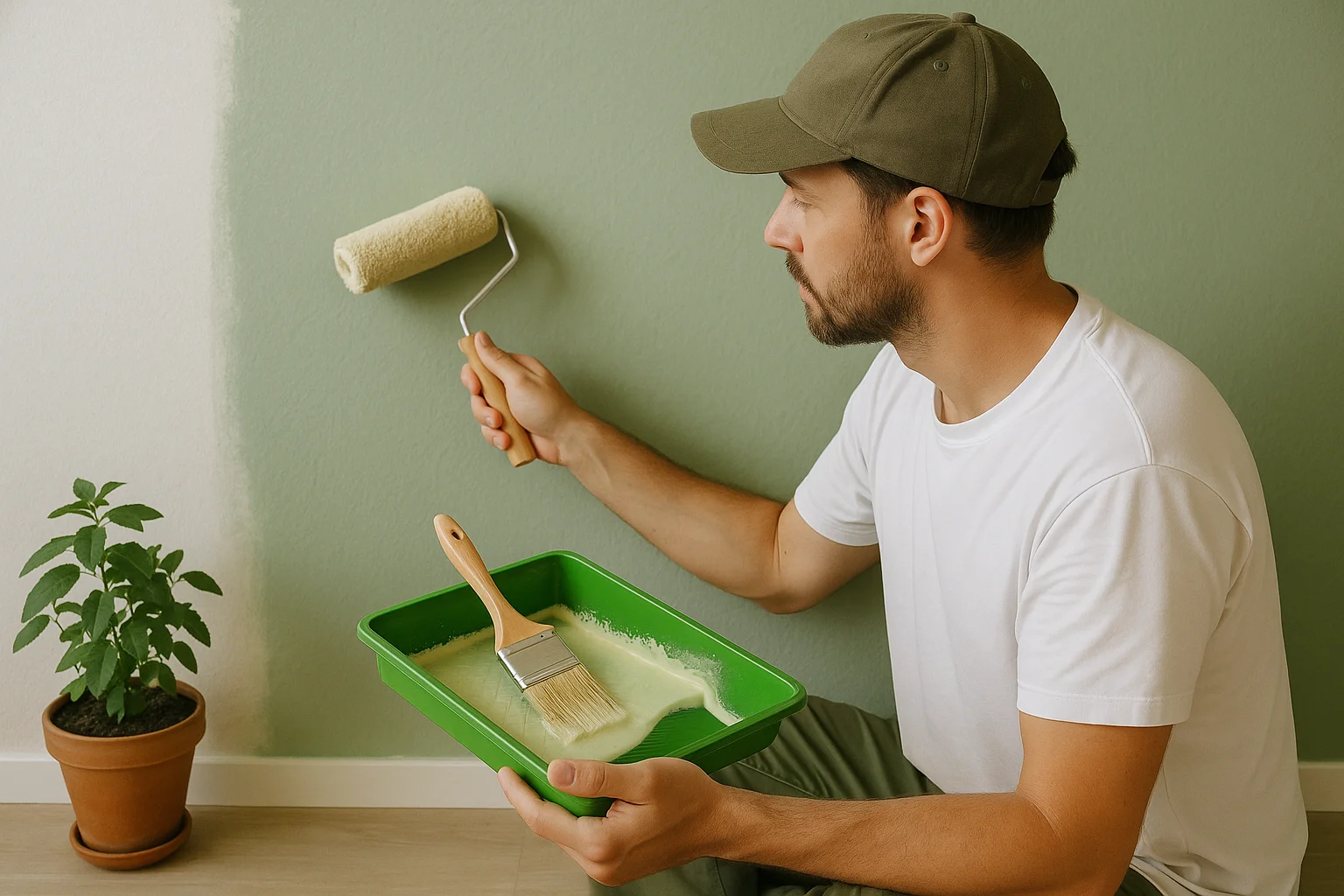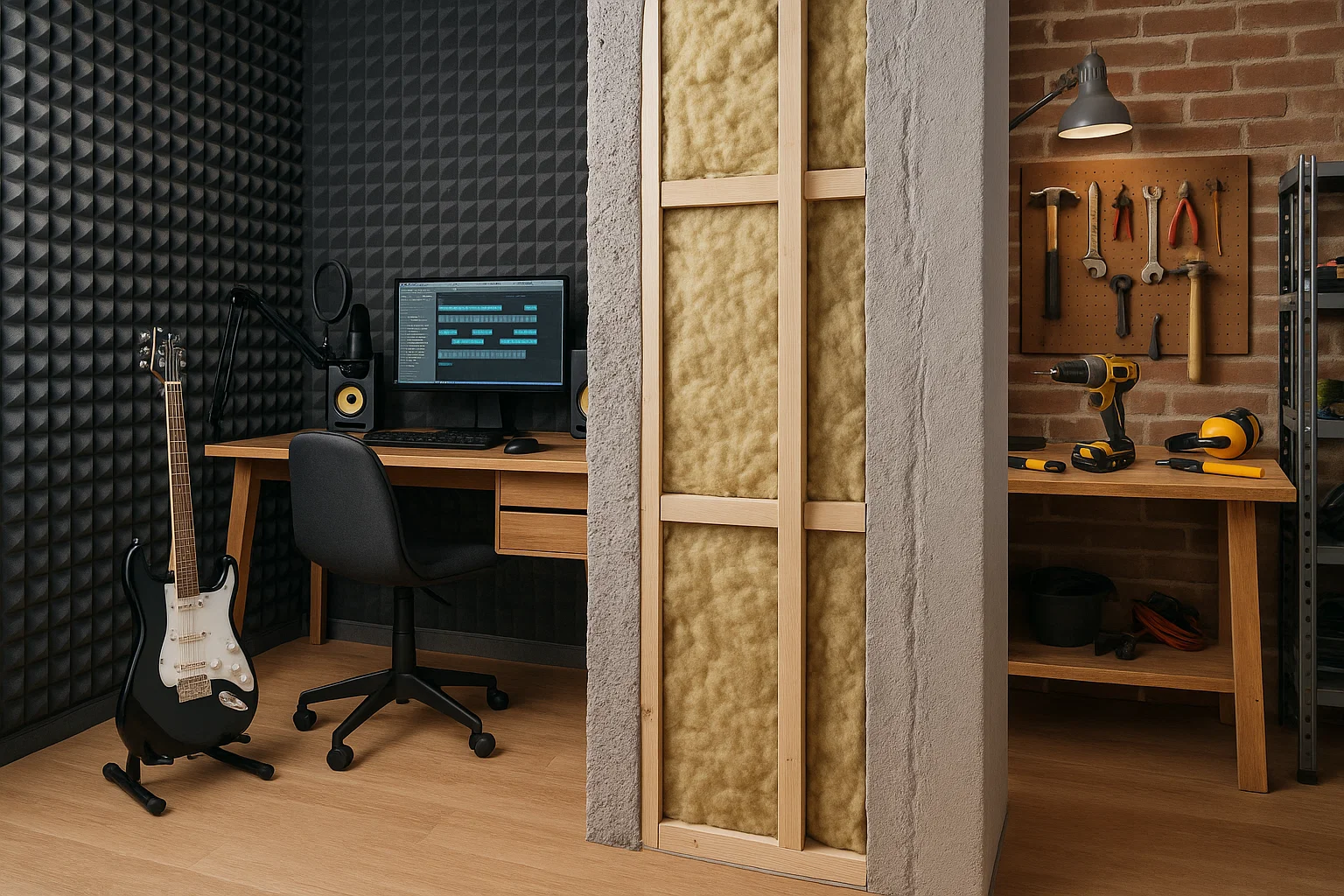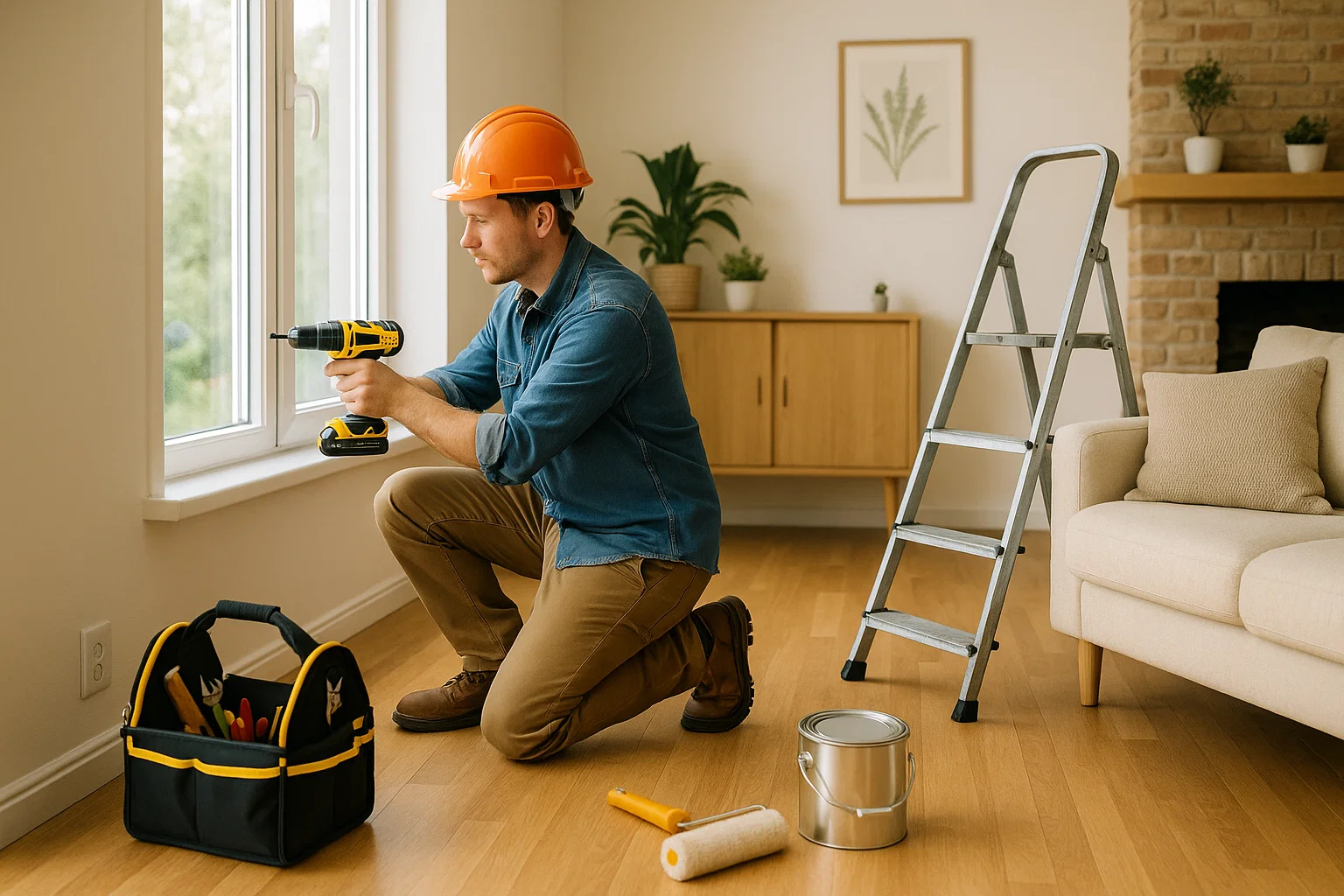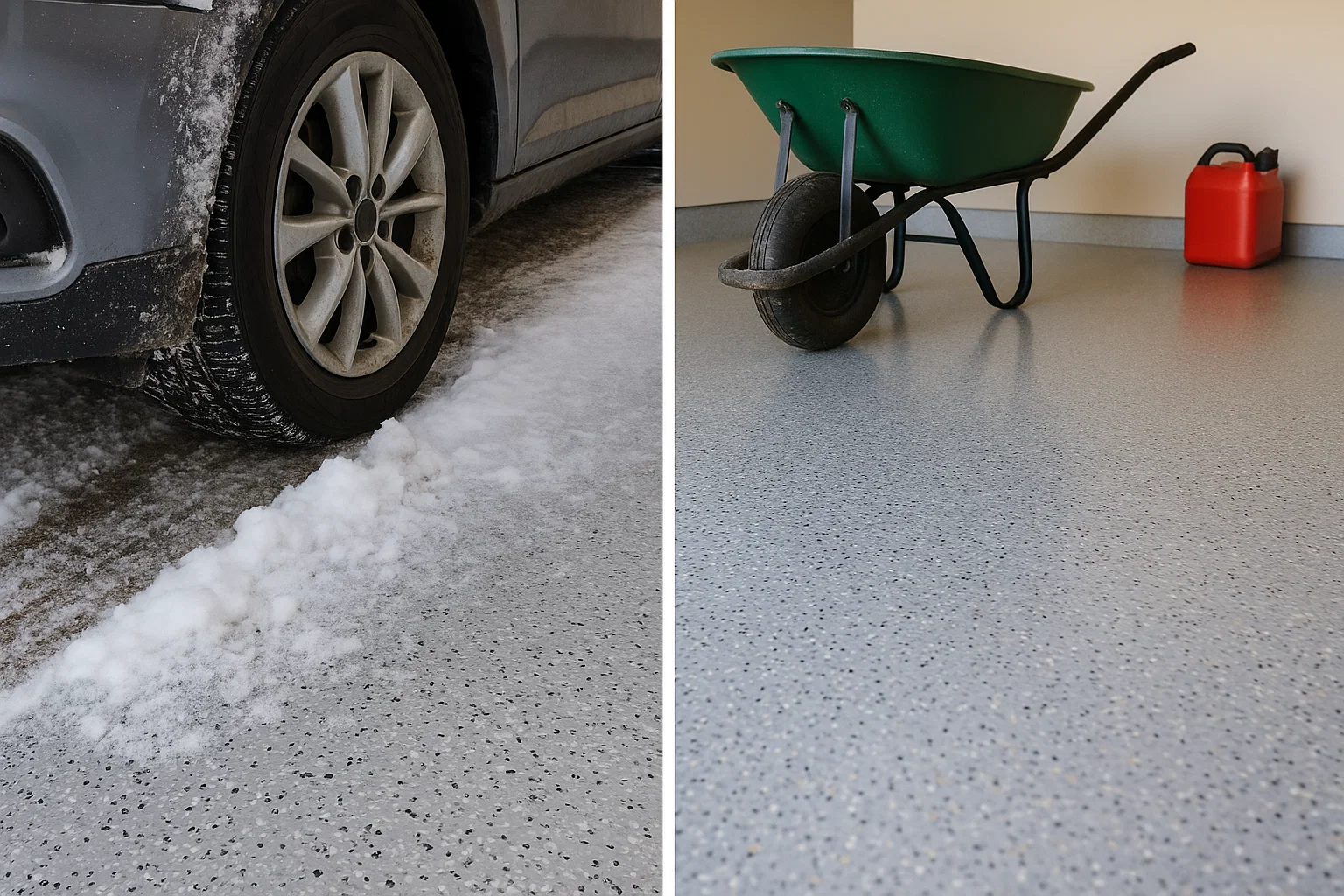A fresh coat of paint can instantly revive a room, but did you know many traditional paints release volatile organic compounds (VOCs) that can linger in your home’s air for years? VOCs contribute to headaches, allergies, and even long‑term respiratory issues, especially in poorly ventilated spaces. As homeowners become more health‑ and planet‑conscious, eco‑friendly painting practices are no longer niche—they’re essential. By choosing low‑ or zero‑VOC paints, responsibly preparing surfaces, and adopting greener cleanup methods, you protect your family’s well‑being and reduce environmental impact. In this article, we’ll explore how to paint your home safely and sustainably from start to finish.
Choose Low and Zero‑VOC Paints
The heart of an eco‑friendly paint job begins at the can. Traditional paints can emit dozens of VOCs, like formaldehyde or benzene, which irritate eyes, throat, and lungs, and may even wander outdoors to contribute to urban smog. Luckily, leading manufacturers now offer high‑performance, low‑VOC and zero‑VOC formulas that deliver the same coverage, durability, and color fastness as their high‑VOC counterparts.
When selecting paint, look for labels certified by organizations such as Green Seal or GREENGUARD. These certifications guarantee that the paint meets strict indoor air‑quality standards. Low‑VOC paints typically contain fewer than 50 grams per liter of VOCs, while zero‑VOC options fall below 5 grams per liter. Many zero‑VOC paints also avoid harmful additives like formaldehyde or heavy metals.
Keep in mind that even zero‑VOC paints can contain trace amounts of VOCs from colorants. Always allow a few days of ventilation after painting: open windows, run fans, and use air purifiers with activated charcoal filters to accelerate the removal of residual fumes. By starting with a clean, safer formula, you minimize health risks for everyone who steps into the freshly painted space.
Prepare Surfaces Using Green Methods
Surface preparation may seem purely functional—sanding, priming, and patching—but it also presents opportunities to reduce your environmental footprint. Traditional chemical strippers and degreasers often contain harsh solvents that release toxic vapors and require special disposal. Instead, consider these greener alternatives:
- Water‑based Strippers and Detergents: Formulated without harsh solvents, these products effectively remove old paint or grease when used with soft scrubbing pads. They clean up easily with soap and water.
- Vinegar Solutions for Mildew: A 1:1 mixture of white vinegar and water kills mold and mildew without bleach. After scrubbing the affected area, rinse thoroughly and allow surfaces to dry completely to prevent future growth.
- Eco‑Friendly Spackling Compounds: Many brands now offer spackle made from recycled materials with low chemical emissions. These compounds fill nail holes and small cracks, then sand smoothly for a seamless finish.
Always wear a NIOSH‑approved mask and use drop cloths or reusable plastic sheeting to protect floors and furniture. When sanding, opt for hand sanding or low‑dust-creating sanding sponges to keep airborne particles to a minimum. Proper preparation extends the life of your paint job and ensures that every layer adheres and cures without hidden moisture or contaminants.
Optimize Ventilation and Indoor Air Quality
Painting indoors without proper airflow traps VOCs and dust particles, making even low‑VOC paints smell stronger and settle more slowly. To safeguard your family’s health:
- Cross‑Ventilate: Open windows on opposite sides of the room and position fans to push fresh air through the space.
- Use Window Fans: Placed in reverse (exhaust), these quickly draw fumes outside.
- Air Purifiers: Choose models with HEPA and activated‑carbon filters to capture fine particulates and absorb remaining odors.
If weather or security concerns limit your ability to open windows, consider installing temporary duct fans connected to flexible vent tubing that leads outdoors. Avoid painting in enclosed bathrooms without exhaust fans, and never rely on central HVAC systems alone—they may recirculate paint fumes throughout your home. With consistent ventilation, the paint cures faster, surfaces feel ready for normal use sooner, and your indoor air remains safer for children, pets, and anyone with asthma or allergies.
Clean Up with Minimal Waste
Once the last brushstroke is dry, the cleanup begins—and many traditional methods generate hazardous waste. Instead, embrace these eco‑friendly cleanup techniques:
- Reuse and Store Leftover Paint: Pour extra paint into labeled, airtight containers. Stored in a cool, dark place, many low‑VOC paints remain usable for future touch‑ups.
- Strain and Return Excess: Let paint sit so solids settle, then pour the clear liquid back into the can for thinner coats later.
- Water‑based Brush Cleaners: For water‑based paints, use biodegradable brush‑and‑roller cleaners. After washing, strain solids and dry them for disposal, while sending water down a utility sink with plenty of running water.
- Donate or Recycle: Check local community centers, schools, or reuse stores; many accept leftover paints. Also, review municipal guidelines for recycling or safe disposal of leftover paint and containers.
By minimizing waste and sharing usable paint, you prevent unnecessary landfill buildup and help neighbors in need. Eco‑friendly cleanup completes the sustainable painting cycle, ensuring that your project benefits both home and planet.
If you’d rather leave the details to licensed professionals, Top Tier Building Services specializes in 100% eco‑friendly painting. We handle every step—from green surface prep to low‑VOC finishes—and ensure your home stays healthy and beautiful. Request your free green painting estimate today!
Choosing Sustainable Tools and Equipment
Even your tools can carry environmental considerations. Traditional plastic paint trays, sheets, and stir sticks end up in the trash after one use. Instead, look for:
- Reusable Metal Trays: Durable and easy to clean.
- Silicone Disposable Liners: Keep trays pristine; peel off, wash, and reuse many times.
- Bamboo or FSC‑Certified Stir Sticks: Renewable and compostable.
- Natural‑Fiber Paintbrushes: Brushes made from plant‑based fibers avoid animal products and shed less.
Maintenance extends tool life and reduces the frequency of replacement. After each project, clean brushes thoroughly with biodegradable soap, reshape bristles, and store them flat so they retain their form. Sustainable tools may cost a bit more up front, but they pay for themselves over multiple projects while cutting down on single‑use plastics.
FAQs
Q1: What’s the difference between low‑VOC and zero‑VOC paint?
A1: Low‑VOC paints contain up to 50 g/L of VOCs, while zero‑VOC paints have fewer than 5 g/L. Zero‑VOC is ideal for sensitive individuals, but both outperform traditional formulas in indoor air quality.
Q2: Can I paint with eco‑friendly paints in high‑moisture areas?
A2: Yes. Many low‑ and zero‑VOC paints are formulated specifically for bathrooms or kitchens; look for mildew‑resistant labels and follow proper ventilation practices.
Q3: How long should I ventilate after painting with low‑VOC paint?
A3: Despite lower emissions, allow at least 48–72 hours of cross‑ventilation. Use fans and purifiers to expedite fume removal, ensuring all household occupants are comfortable.
Q4: Are green surface cleaners as effective as chemical strippers?
A4: Water‑based strippers and vinegar solutions work well for most paint and mildew removal tasks. Stubborn areas may require a second application or a light sanding to achieve a clean surface.
Q5: Do eco‑friendly painting methods cost more?
A5: Premium low‑ and zero‑VOC paints can be slightly pricier, and sustainable tools may have higher up‑front costs. However, savings accrue through improved durability, reduced health risks, and less waste disposal—often making green painting cost‑competitive overall.
Conclusion
Eco‑friendly painting is about making every choice—from the paint formula to the cleanup—without compromising on performance or aesthetics. By selecting low‑ and zero‑VOC paints, utilizing green preparation methods, ensuring robust ventilation, and cleaning up responsibly, you protect your family’s health and honor environmental stewardship. Small adjustments in materials and techniques not only reduce harmful emissions but also often lead to longer‑lasting, more vibrant finishes.
Painting your home safely and sustainably doesn’t require sacrifice—it’s an opportunity to embrace innovation and mindful living. If you’re ready to refresh your spaces the eco‑friendly way, trust Top Tier Building Services to deliver expert green painting solutions.
Get started on your healthier home makeover today!
📞 510‑566‑4906 │ ✉️ sales@toptierbuildingservices.com





